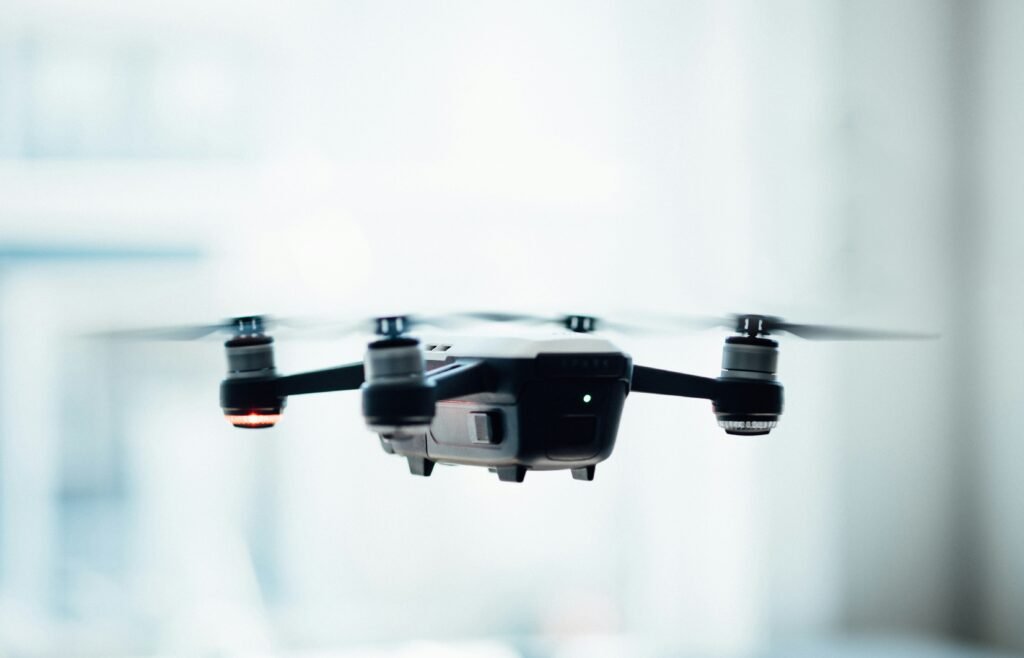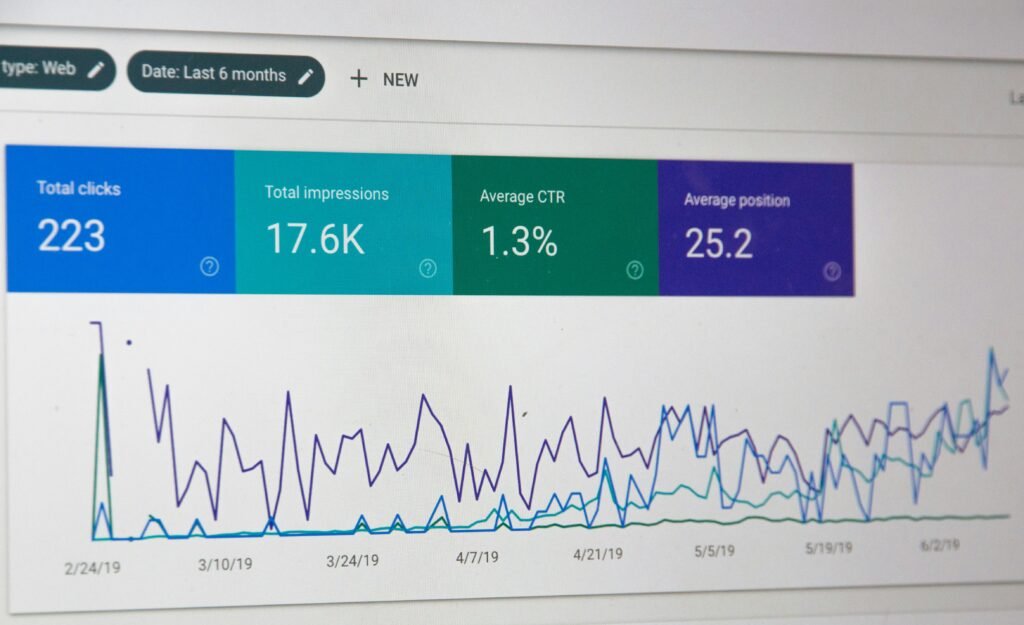
Introduction to DJI Drones
DJI, short for Dà-Jiāng Innovations Science and Technology Co., Ltd., is a renowned leader in the drone industry, established in 2006 by Frank Wang. Starting as a modest venture operating from a small office in Shenzhen, DJI has grown into a global powerhouse, significantly influencing the evolution of drone technology. The company’s mission centers on empowering users through innovative aerial solutions, making sophisticated technology accessible for both recreational and commercial applications.
Over the years, DJI has distinguished itself through relentless innovation, presenting various drone models that cater to diverse needs, from artistic aerial photography to agricultural monitoring. Notable product launches like the Phantom series and the Mavic line have redefined consumer expectations, establishing benchmarks in the drone market. The company’s focus on user experience, combined with cutting-edge technologies such as GPS stabilization, intelligent flight modes, and superior camera capabilities, has set DJI apart from its competitors.
Furthermore, DJI is committed to advancing drone safety and regulation compliance, actively participating in discussions to shape the future of the drone industry. Their dedicated pursuit of technological excellence is evident in their continuous integration of AI and machine learning into drone functionality. For instance, features like obstacle avoidance and automated tracking have transformed how users interact with drones, creating more intuitive and safer experiences.
The commitment to quality is not solely reflected in DJI’s operating principles but also in its robust ecosystem, comprising a range of accessories and software solutions that enhance the overall drone experience. The integration of these components ensures that users can maximize the potential of their smart drones, whether for professional filmmaking or casual exploration. As we delve deeper into the various models within DJI’s impressive lineup, the foundational commitment to technological advancement becomes increasingly apparent.
The Evolution of DJI’s Drone Technology
Since its inception, DJI has consistently pushed the boundaries of drone technology, leading the industry with innovative solutions that cater to both amateur enthusiasts and professional users. The journey began with the introduction of the Phantom series, which set a new standard in consumer drones with its easy-to-use interface and stable flight features. Over the years, key milestones have marked the evolution of DJI’s drone technology, significantly enhancing flight stability, camera capabilities, and overall user experience.
One of the most notable advancements in DJI drones is the integration of advanced flight stabilization systems. The development of their proprietary gimbal technology has transformed aerial photography by allowing users to capture smooth, high-quality footage even during turbulent flying conditions. This innovation not only improved the aesthetic quality of images and videos but also opened new avenues for content creators and filmmakers, enabling previously unattainable shots.
In parallel, DJI’s focus on enhancing camera capabilities has led to the introduction of drones equipped with high-resolution sensors. For instance, models like the Mavic and Inspire series feature cameras capable of capturing 4K video and beyond, providing both consumers and professionals with tools that meet their evolving needs. The integration of intelligent shooting modes and real-time transmission technology further allows users to frame compositions accurately from long distances, effectively extending the creative possibilities in the realm of aerial cinematography.
Moreover, DJI has continuously improved user experience through intuitive software and mobile applications, ensuring that drone operation feels seamless. Features such as obstacle avoidance and automated flight paths have made flying drones accessible to novices while maintaining the robust functionality required by experienced operators. This combination of easy-to-use controls and cutting-edge technology has revolutionized not only personal entertainment but also applications in industries such as agriculture, real estate, and disaster management.
As DJI continues to innovate, the trajectory of its drone technology hints at a future where aerial robotics play an increasingly integral role in our daily lives, transforming the way we capture, survey, and interact with the world around us.
Current Range of DJI Smart Drones
The current lineup of DJI smart drones showcases a diverse range of models designed to cater to various user needs, from hobbyists to professional filmmakers. The flagship models include the Mavic series, Phantom series, and Inspire series, each boasting unique features and capabilities that enhance the flying experience.
The DJI Mavic series, particularly the Mavic 3, has gained significant attention for its portability and advanced camera capabilities. With a dual-camera system featuring a 4/3 CMOS sensor, the Mavic 3 excels in aerial photography and videography. It supports 5.1K video capture, ensuring high-definition output suitable for professionals. The Mavic series is designed for users who value both performance and convenience, as its compact design allows easy transport and quick deployment.
Next in line is the DJI Phantom series, which has been a staple in the drone community for its reliability and robust build quality. The Phantom 4 Pro version is particularly noted for its powerful obstacle avoidance system and a 20MP camera that delivers impressive image quality. This series is primarily aimed at professionals in industries like agriculture, construction, and filmmaking, where advanced features like aerial surveying and mapping are essential.
Lastly, the DJI Inspire series caters to high-end commercial users and filmmakers. The Inspire 2 model stands out with its ability to capture stunning 5.2K video and a host of intelligent flight modes that enhance creative filming. Equipped with interchangeable lenses and a built-in stabilizer, the Inspire 2 is favored for cinematic production and offers customization options to meet specific project demands.
Overall, the current range of DJI smart drones presents an array of features and specifications designed to accommodate differing user requirements, making it easier for both amateurs and professionals to find a drone that fits their needs.
Applications of DJI Smart Drones
DJI smart drones have emerged as pivotal tools in various industries, revolutionizing traditional methods through advanced aerial technology. One of the most notable applications of these drones is in filmmaking. Filmmakers leverage DJI’s high-definition cameras and stabilizing gimbals to capture stunning aerial footage, enhancing storytelling by providing audiences with breathtaking visuals that were once challenging to achieve. Specific examples include the use of drones in major motion pictures and commercials, where aerial perspectives significantly contribute to the narrative and visual appeal.
In the agriculture sector, DJI smart drones facilitate precision farming practices. Farmers utilize these drones for crop monitoring, health assessments, and even spraying fertilizers and pesticides with remarkable accuracy. For instance, DJI’s Agras series allows farmers to cover large areas quickly and efficiently, resulting in increased productivity and reduced waste. This technological integration promotes sustainable farming practices, thereby benefitting both the environment and crop yields.
Construction also benefits significantly from the deployment of DJI drones. These devices are employed for site surveying, monitoring progress, and ensuring safety compliance. By providing real-time aerial imagery and data analysis, construction managers can make informed decisions, reducing downtime and enhancing project efficiency. Case studies have shown that incorporating drone technology can decrease costs and improve project timelines.
Moreover, in life-saving scenarios, DJI smart drones play a crucial role in search and rescue operations. Equipped with thermal imaging and other advanced features, these drones enable responders to locate individuals in challenging terrains and adverse weather conditions quickly. For example, during natural disasters, drone units can assess damages and locate survivors more effectively than traditional methods.
Lastly, surveying and mapping stand to gain significantly from the integration of DJI smart drones. Their ability to capture precise geographic data allows surveyors to create accurate topographical maps and 3D models in less time than manual surveying methods. This efficiency not only streamlines workflow but also enhances the quality of data collected.
User Experience and Community Feedback
The user experience of DJI smart drones has been widely documented and discussed among drone enthusiasts and professionals. With a strong track record of innovation, DJI has cultivated a loyal user base that actively shares insights about the performance and features of their drones. The feedback often highlights the ease of use as a significant advantage, enabling users from various skill levels—from novices to seasoned pilots—to operate these drones with relative simplicity.
Testimonials from users commend the intuitive design and user-friendly interfaces of DJI drones, which offer a seamless flying experience. Many pilots appreciate the advanced technology integrated into the devices, such as obstacle detection systems, automated flight modes, and high-quality cameras capable of capturing stunning aerial shots. This functionality has elevated the flying experience for many, allowing users to focus on creativity rather than grappling with intricate controls.
Moreover, community feedback around DJI drones illustrates a thriving ecosystem of support and knowledge sharing. Online forums and social media groups provide valuable platforms where users share tips, tricks, and personal experiences. These communities are especially beneficial for beginners, who often find camaraderie and guidance from experienced pilots. Discussions range from troubleshooting common issues to sharing flight locations and creative project ideas, fostering a sense of belonging among users. Additionally, DJI’s commitment to supporting its community through regular updates and new feature introductions encourages ongoing engagement and exploration of new possibilities.
As a result, the combination of positive user experiences and active community involvement significantly enhances the overall perception of DJI drones. This collaborative culture ensures that all users—regardless of their experience level—can derive maximum benefit from their aerial endeavors, contributing to the future of flight.
Future Trends in Drone Technology
The landscape of drone technology is evolving rapidly, driven by advancements in artificial intelligence and automation that promise to revolutionize the capabilities of unmanned aerial vehicles (UAVs), including offerings from industry leaders like DJI. As companies continue to innovate, several emerging trends are set to redefine the possibilities within this dynamic sector.
One of the most significant developments is the integration of artificial intelligence into drone systems. This integration empowers drones to perform complex tasks with minimal human intervention, enhancing their capabilities in various applications, from surveillance and agriculture to delivery and emergency response. By employing machine learning algorithms, drones will be able to analyze data in real-time, enabling them to make decisions autonomously, which significantly improves efficiency and reduces operational costs.
Moreover, the advancement of automation technology in drones is paving the way for longer flight times and improved operational range. The transition from traditional manual controls to automated systems allows for a seamless flight experience and extends the operational envelope of these devices. Enhanced battery technology is pivotal to this evolution, as innovations in energy density and charging efficiency are expected to yield batteries that last significantly longer. Consequently, the potential for extended missions without the need for constant recharging can transform how industries utilize drones.
Additionally, as regulatory frameworks worldwide become more accommodating to drone operations, there will be greater opportunities for commercial applications. The use of drones in urban environments, delivery systems, and even air taxis is anticipated to gain traction, supported by ongoing improvements in safety features and navigational capabilities.
Overall, the convergence of AI, automation, battery advancements, and regulatory progress indicates a vibrant future for the drone industry, particularly for companies like DJI that continue to push the boundaries of what’s possible with UAV technology.
Regulations and Safety Considerations
The rapid advancement of drone technology, particularly in the realm of smart drones like those produced by DJI, has brought about significant changes in how aerial devices are regulated. Aviation authorities across the globe have established legal guidelines to ensure that drone usage remains safe and compliant in the shared airspace. These regulations vary by country but often cover similar foundational aspects, aimed at fostering a culture of responsible flying.
One of the primary regulations is the requirement for drone pilots to register their unmanned aerial vehicles (UAVs) once they surpass a certain weight limit. For example, in the United States, drones weighing more than 0.55 pounds must be registered with the Federal Aviation Administration (FAA). Similar registration requirements are in place in many other countries, aiming to create an accountable framework for drone operators. Additionally, pilots must adhere to specific operational limitations, such as maintaining visual line of sight and flying below certain altitude thresholds, to minimize the risk of accidents.
Safety considerations are equally important for drone pilots. Operators are encouraged to conduct thorough pre-flight checks, which include verifying the drone’s functionality and ensuring that the battery is fully charged. Furthermore, understanding the airspace regulations and knowing when and where it is permissible to fly are crucial to avoiding collisions and ensuring compliance with regional laws. It is also vital to respect the privacy of individuals and refrain from flying over crowded spaces without proper permission. Educating oneself about the evolving drone legislation and maintaining a commitment to safety are essential responsibilities for all UAV operators.
Ultimately, adherence to both regulations and safety guidelines is crucial not just for individual drone pilots but for the entire aviation community. As drone usage continues to increase, maintaining a harmonious balance between innovation and safety becomes paramount for the continued growth and development of the sector.
Comparing DJI Drones with Competitors
When evaluating the landscape of consumer and professional drones, DJI stands out as a prominent leader in the industry. However, various competitors strive to carve out their niche, offering a range of drones with unique features and pricing strategies. This comparison will explore both the strengths and weaknesses of DJI drones in relation to other prominent manufacturers like Autel Robotics, Skydio, and Parrot, providing insight into what these brands bring to the table.
One of the most significant advantages DJI drones have is their advanced technology. DJI frequently incorporates cutting-edge features such as intelligent flight modes, obstacle avoidance, and sophisticated camera systems. For instance, the DJI Mavic series boasts exceptionally high camera quality, enabling 4K video recording and superb stabilization. In contrast, while Autel Robotics has made strides with its EVO drones, they generally do not match the overall user-friendly experience, though they do offer competitive pricing and solid imaging capabilities.
Another key factor in this comparison is pricing. DJI drones tend to sit at a higher price point compared to some of their competitors, reflecting the research and development invested in their products. For example, the DJI Air series is often viewed as a premium option, whereas brands like Parrot may provide more budget-friendly alternatives like the Anafi. Even so, Parrot’s offerings often lack the advanced features that have made DJI drones immensely popular among professionals and enthusiasts alike.
While DJI frequently excels in user interface design and reliability, some competitors showcase specific advantages. For instance, Skydio’s autonomous flying capabilities provide a unique edge, particularly useful for continuous tracking in dynamic environments. However, the relatively high cost of Skydio drones may deter some potential users.
In light of these factors, it’s evident that while DJI remains a dominant force in the drone market, competitors are innovating and challenging the status quo, catering to diverse user preferences and budgets. Ultimately, potential buyers should weigh their specific needs against the offerings of DJI and its competitors to make an informed decision.
Conclusion: The Outlook for DJI Smart Drones
Throughout this exploration of DJI Smart Drones, it has become abundantly clear that DJI has established itself as a pivotal player within the drone industry. The company’s relentless innovation in technology, design, and usability has not only set a benchmark for drone manufacturing but has also significantly influenced how consumers and professionals utilize aerial equipment for various applications. From stunning aerial photography to progressive agricultural practices, the versatility of DJI’s drones marks a noticeable shift in industry standards.
The future of DJI Smart Drones looks promising, driven by continuous advancements in artificial intelligence, battery technology, and autonomous flight capabilities. As demands for more efficient and intelligent drone solutions grow, DJI is well-positioned to respond to these evolving needs. Furthermore, the company’s focus on user interface improvements ensures that new users can easily engage with the technology, fostering broader adoption across diverse sectors.
Moreover, the expanding market for unmanned aerial vehicles offers significant opportunities for DJI to enhance its product offerings. As the integration of drones into sectors such as surveillance, delivery services, and environmental monitoring evolves, the potential for growth remains substantial. DJI’s commitment to sustainability and safety will likely play a crucial role in shaping the direction of future developments within the industry.
As we reflect on the remarkable trajectory of DJI Smart Drones, it is essential for readers to consider their own experiences and insights regarding this technology. The community excited by drones continues to grow. Inviting discussions around personal experiences may lead to a richer understanding of the impact these devices have on various fields. As we look ahead, the possibilities are indeed extensive, and engaging with fellow enthusiasts could provide invaluable perspectives on the future of flight.




